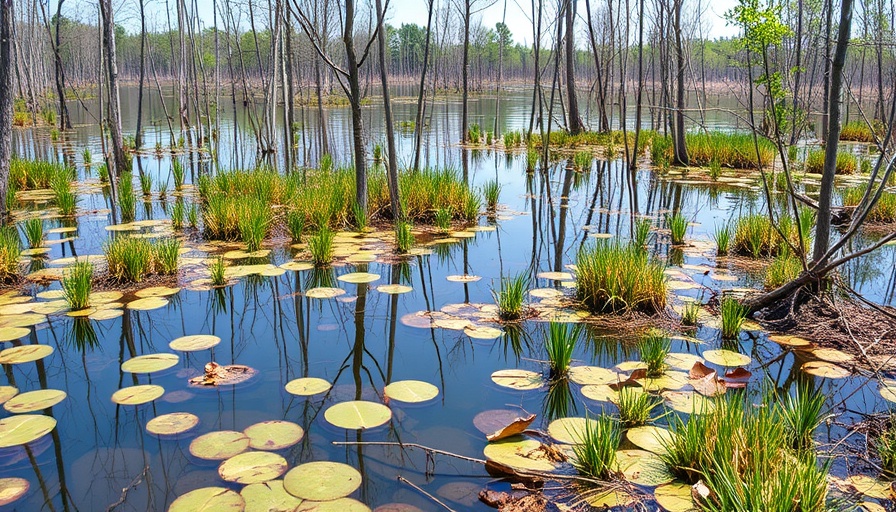
Understanding the Use of Treated Effluent in Wetland Restoration
As discussions around environmental restoration become increasingly pertinent, the restoration of U.S. wetlands using treated sewage effluent has received attention for both its potential benefits and significant risks. The practice involves using effluent from wastewater treatment plants to help revive dying ecosystems. On one hand, effluent contains nutrients that are beneficial for plant growth, providing an essential boost to struggling wetlands. However, what lies beneath this seemingly beneficial practice is a grave reality: the presence of hazardous chemicals known as PFAS, or per- and polyfluoroalkyl substances, measures efforts toward restoration, more detrimental than helpful.
The Threats of PFAS: A Hidden Risk
PFAS are notorious for their environmental persistence, hence the nickname 'forever chemicals.' These compounds do not decompose easily, leading to their accumulation in water sources, wildlife, and even humans. Research indicates that wastewater effluent generally contains alarming levels of PFAS, well over safe limits established by regulatory bodies like the Environmental Protection Agency (EPA). As wetlands are recharged with this water, advocates raise concerns about threats to wildlife, food systems, and drinking water for millions of families.
Awareness and Misconceptions in the Community
Community members, particularly homebuyers and investors interested in sustainable living, must grasp the distinction between truly eco-friendly practices and those that offer a mere facade of environmentalism. Terms like 'recycling water' can give a misleading impression, suggesting benefits without accompanying risks. Awareness of what lies within that treated effluent is crucial for individuals aiming to make informed decisions about wetlands restoration in their areas.
Potential Benefits vs. Consequences
The initiative to restore wetland ecosystems could indeed provide valuable advantages. For communities, revitalized wetlands improve biodiversity and enhance water quality while acting as natural buffers against flooding. However, with the adverse effects of PFAS, the ecological and health consequences far outweigh these benefits. This presents a paradox for homeowners and investors who wish to engage in sustainable practices yet caution against the inherent risks.
Local Examples of Effluent Utilization
Projects across the country demonstrate the scale of treated effluent use. In states like California, rivers heavily dominate the environment with effluent. Leading initiatives such as those in Orange County, which employs effluent to replenish drinking water sources for over 2.5 million residents, heighten concerns about the scope of PFAS exposure. Given that researchers have detected PFAS levels thousands of times higher than safety limits at numerous wastewater facilities, there are immediate implications for health and the environment.
The Future of Wetland Restoration and PFAS Prevention
Looking ahead, communities will undoubtedly be faced with challenges regarding the balance between ecological restoration and health safety. The growing demand for clean water solutions coupled with effective PFAS removal technologies in drinking water must be addressed transparently. As ongoing discussions swing toward sustainability, collaboration among stakeholders — municipalities, environmentalists, health professionals, and the public — is more vital than ever.
Call to Action: Stay Informed
For homebuyers, sellers, and property investors in Dumfries, understanding the implications of treated wastewater and the presence of PFAS in local wetland restoration efforts is essential. Engage with local advocacy groups, follow the progress of restoration projects, and make informed choices that reflect your values in sustainable living.
 Add Row
Add Row  Add
Add 





Write A Comment